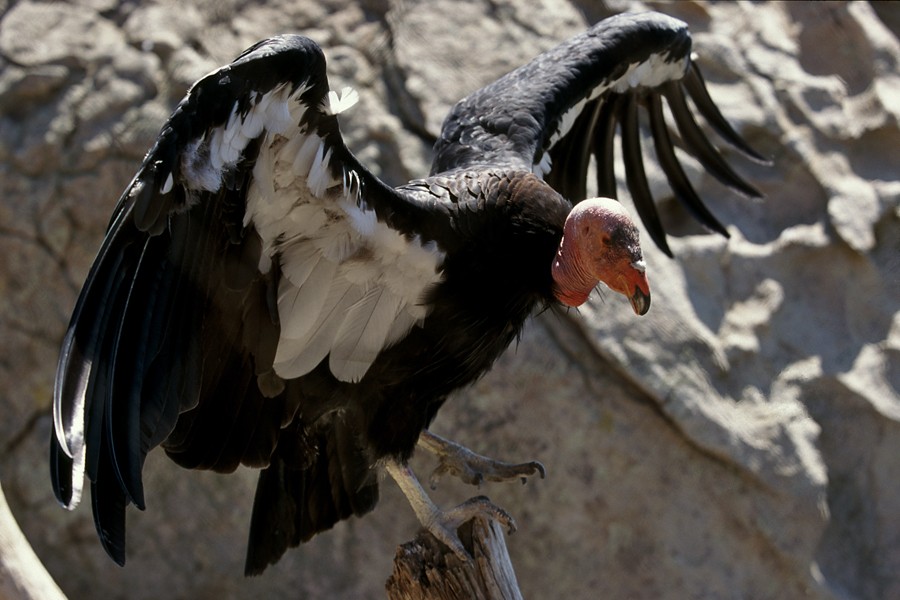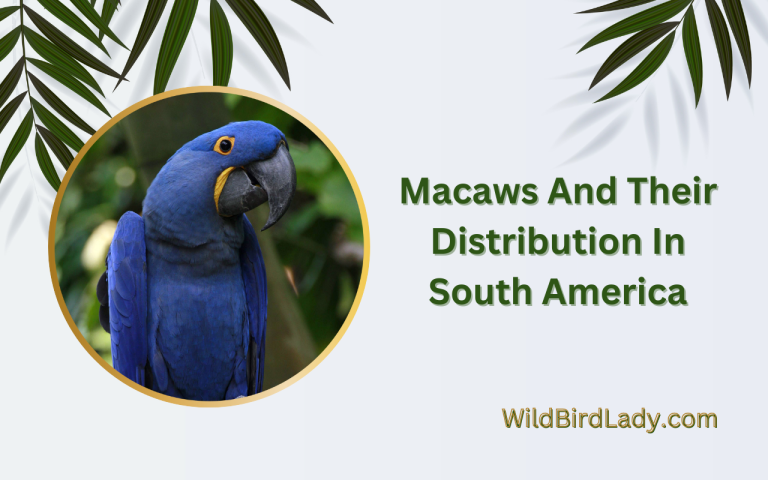California Condors: Tracking the Population Numbers Over TimeCalifornia CondorsCalifornia Condors: Tracking the Population Numbers Over Time
The population of california condors has been closely monitored over time using tracking methods. The data obtained has shown both setbacks and successes in conservation efforts.
These majestic birds, with their unique appearance and history of near extinction, continue to be a subject of study and concern for scientists and environmentalists worldwide. In this article, we will explore the population trends of california condors over the years, discussing factors that contributed to their decline, recent initiatives that have helped increase their numbers, and ongoing efforts aimed at ensuring their survival for generations to come.
Overall, the story of the california condor highlights the delicate balance between human actions and nature, and the importance of taking conservation measures that have lasting impact.
Reasons Behind Population Decline
California Condors: Tracking The Population Numbers Over Time
The california condor, also known as gymnogyps californianus, is a critically endangered bird species that belongs to the new world vulture family. The majestic bird boasts a wingspan of up to 3 meters, making them one of the largest land birds in north america.
Unfortunately, the population of this magnificent bird species has been declining over the years. We will examine the reasons behind the population decline of the california condor, including human-related causes, effects of habitat loss and fragmentation, and pollution and ingestion of lead ammunition.
Human-Related Causes Of Population Decline
The biggest human-related causes of california condor population decline include:
- Poaching: The illegal shooting of the california condor for sport or profit has greatly affected their population. Poachers often kill or trap them to sell their feathers and body parts on the black market.
- Habitat destruction: Human activities like logging, urbanization, agriculture, and livestock grazing have led to the destruction of the condor’s natural habitat. This not only destroys their nesting and roosting sites, but also limits their food supply, making it difficult for them to survive.
- Collisions with power lines: Condors are large birds that require ample space to navigate. Unfortunately, these birds often collide with power lines that have been installed in their flight paths leading to severe injuries and even death.
- Cattle ranching: The use of lead ammunition by cattle ranchers is another leading cause of the decline. California condors are scavengers and tend to feed on dead animals. When they eat meat that was killed using lead ammunition, they ingest lead, which results in lead poisoning.
Effects Of Habitat Loss And Fragmentation
Habitat loss and fragmentation have the following effects on the california condor population:
- Destruction of nesting and roosting sites: Habitat loss is one of the leading reasons for the decline in california condor populations. When their nesting sites or roosting trees are destroyed, the birds are forced to find alternative sites, which can lead to increased predation or harassment by humans.
- Limiting food supply: Habitat destruction reduces the supply of food available to the california condor. These birds usually feed on carrion, and when their habitats are destroyed, it becomes harder for them to find a reliable source of food.
Pollution And Ingestion Of Lead Ammunition
The ingestion of lead ammunition often has the following effects on the california condor population:
- Lead poisoning: The california condor population is severely affected by lead poisoning resulting from the ingestion of lead ammunition used to kill livestock. This is one of the leading causes of death amongst the california condor population.
- Reduced reproductive success: Lead poisoning reduces reproductive success in birds. When birds that are carrying an egg are exposed to lead, the egg’s development is often impaired, which can lead to hatching failures or reduced survivability rates for their chicks.
The california condor population has been declining due to human activities like habitat destruction, lead ammunition poisoning, and poaching. If we do not take action to protect this iconic species, we could lose them forever.
Efforts To Increase Population
California Condors: Tracking The Population Numbers Over Time
The california condor, an iconic and endangered bird species, has faced numerous challenges ranging from loss of habitat to hunting. However, various efforts have been put in place to increase their population numbers. Let’s dive into some of these efforts.
Captive Breeding Programs
To increase the population of california condors, organizations have established captive breeding programs. These programs involve the following:
- Capturing condors and placing them in captivity to breed, increasing their numbers
- Providing necessary medical care to condors in captivity
- Parent-rearing young condors with minimal human intervention to prepare them for release into the wild
- Maintaining a genetically diverse population to reduce the occurrence of birth defects.
Fledgling Programs And Release Into The Wild
Once the young condors in captive breeding programs have matured, they are released into the wild. There are various programs in place to assist in the successful release of these birds, including:
- Fledgling programs: Assisting young condors in their first flights over short distances to encourage breeding
- Soft releases: Allowing young condors to acclimate to their surroundings before being released fully
- Release sites located in suitable habitats for the birds, complete with necessary food sources, shelter and protection from predators.
Monitoring And Tracking Of Population Numbers
Tracking the population numbers of california condors is important to evaluate the success of conservation efforts. Here’s how this is achieved:
- Consistent monitoring of the population numbers using gps tracking devices and surveys
- Determining the productivity rate of released pairs to identify successful breeding pairs
- Keeping an accurate record of information such as the sex, location, and movements of every individual california condor.
Thanks to efforts such as the captive breeding and fledgling programs, california condor populations have been slowly increasing. Careful monitoring and tracking of the population ensures the success of conservation efforts and the continued thriving of this endangered species.
Successes And Setbacks
California Condors: Tracking The Population Numbers Over Time
Human beings have already driven many wildlife species to extinction. Fortunately, we can still track some animals so that they do not disappear from the face of the earth. One such species is the california condor. These grand scavengers remain on the endangered species list due to various reasons such as habitat loss, illegal poaching, and lead poisoning from hunters’ ammunition.
In this piece, we will look at the california condors’ successes and setbacks over time, with a particular focus on their population growth, environmental challenges, and continued monitoring.
Growth Of Population Numbers In Recent Years
Tracking the california condor population numbers remains a critical task for conservationists. Over the years, experts have collated sufficient data that gives us hope that the species is on the path to recovery. Here are some key points on the growth of the california condors’ population:
- The california condor population experienced a dramatic decline over the past few decades.
- After almost becoming extinct, captive breeding programs have helped boost the population of california condors.
- Through continued monitoring and protection efforts, by 2018, the california condor population had increased to over 400 birds globally.
- This positive trend has given hope that the species will continue to thrive if current conservation efforts remain in place.
Environmental Challenges Facing Continued Population Growth
Despite the significant growth in california condors’ population, there are several environmental challenges facing the species as they continue to grow. Here are some of the key points to understand:
- Habitat loss continues to be a significant challenge for the california condor population.
- Illegal wildlife hunting and poaching remain significant threats to california condors. With only a few left in the world, poaching could make the birds completely extinct.
- Lead poisoning is another critical environmental challenge. California condors often eat carcasses of animals that are killed by hunters, and if the bullet contains lead, it could be lethal to the birds.
The Importance Of Continued Monitoring And Protection Efforts
The growth of the california condor population is fantastic news for conservationists. However, it is essential to remember that continued monitoring and protection efforts remain crucial for the species’ survival. Here are some of the key points to understand:
- California condors remain on the endangered species list, so it is vital to keep monitoring the population growth and environmental challenges.
- Policy reform to reduce lead poisoning and conserve natural habitats is crucial in protecting the species.
- Continued global teamwork involving governments, conservationists, and wildlife organizations is necessary to ensure that the california condor population keeps flourishing.
The california condors are a success story of how conservation efforts can help save an endangered species. To ensure their survival and continued growth, we must continue to monitor their population numbers, combat environmental challenges, and work together to protect them from extinction.
With the right actions in practice, the california condor could yet be a symbol of success for future generations.
Future Of California Condors
California Condors: Tracking The Population Numbers Over Time
The california condors, among the largest birds in north america, have been facing a significant threat to their population since the late 20th century. However, thanks to an intensive conservation program, there has been a rise in their numbers in the past few decades.
In this blog post, we will discuss the future of california condors with a focus on their potential for continued population growth and expansion, possible future threats to their population, and the crucial need for ongoing conservation efforts.
Potential For Continued Population Growth And Expansion
The efforts of different organizations and stakeholders to protect the california condors have led to an increase in their numbers. The current population of california condors is over 400 individuals, which is a remarkable feat thanks to the conservation programs.
Moreover, the reintroduction of condors into their natural habitat has played a significant role in this growth.
To ensure that the population continues to grow and expand, the following steps are necessary:
- Implementing flexible management practices to cater to the unique needs of each group of condors
- Adopting measures that will encourage healthy breeding and growth of chicks
- Providing more natural habitat, feeding resources, and nesting sites for the condors.
Possible Future Threats To The Population
Despite the significant growth of the california condor population, several threats continue to pose a problem. These threats are primarily human-caused, and conservationists are alarmed about the potential impact they may have on the continued growth of the population.
The following are some of the potential future threats to the california condor population:
- Lead poisoning from bullets or other sources of lead, which can cause severe illness and death
- Loss of natural habitat due to climate change
- Microtrash ingestion, which can cause choking or lining of the birds’ digestive tract and blockage
- Wind turbines and other energy-generating facilities that may injure or kill the birds.
The Need For Ongoing Conservation Efforts
Considering the threat to the california condor population, continued and rigorous conservation efforts are necessary. The california condor recovery program, established in 1982, has assisted in promoting the continued growth of the condors.
Moreover, sustainable conservation practices such as limiting access to areas where the birds live, advocating for the use of lead-free ammunition in hunting, and providing adequate nesting sites for the birds have been effective.
While the growth in the population of the california condors is a promising development, the threats to the population are formidable. So, we need to continue implementing conservation efforts and promote responsible environmental practices to ensure the growth and sustainability of the species in the long term.
Frequently Asked Questions For California Condors: Tracking The Population Numbers Over Time
What Is The Current Population Of California Condors?
The current population of california condors is around 500 individuals across the world. Despite being on the endangered species list, the population has been steadily increasing over the years.
What Are The Main Reasons For The Population Decline Of California Condors?
The main reasons for the population decline of california condors are habitat loss, hunting, lead poisoning, and human disturbance. Conservation efforts have been put in place to combat these threats.
How Are Scientists Tracking The Population Numbers Of California Condors?
Scientists are tracking the population numbers of california condors using gps tracking collars, visual identification methods, and annual population surveys. This allows them to monitor the health of individual birds and make informed conservation management decisions.
How Do California Condors Contribute To The Ecosystem?
California condors contribute to the ecosystem by scavenging animal carcasses, which helps to prevent the spread of disease and decomposition. They also help to maintain the balance of predator and prey numbers.
What Measures Are Being Taken To Increase The Population Of California Condors?
Several measures are being taken to increase the population of california condors, including captive breeding programs, habitat restoration, and lead poisoning prevention efforts. These measures have been successful in increasing the population over the years.
Conclusion
The california condor population has certainly been through its fair share of ups and downs over the years. Yet, the latest tracking reports do show some positive signs of population growth, which is certainly encouraging. However, it’s essential not to become complacent, and continued conservation efforts must be made to ensure that these birds have a fighting chance for survival.
This means ongoing monitoring, support, and protection of their habitats, addressing the various factors impacting their survival, such as lead poisoning and habitat loss, and continuing education efforts to raise awareness of their status and importance. By doing so, we can hopefully ensure that these majestic birds continue to soar through the californian skies for years to come.







